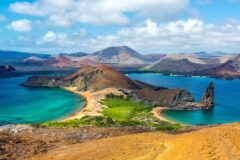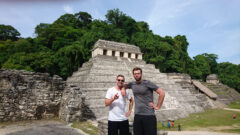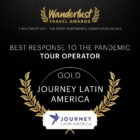It’s a jungle out there

I had only been in the Amazon for a few minutes when I saw my first hummingbird. It looked like an animated gemstone. I watched, entranced, as it sipped nectar from a crimson flower then darted past me, flying so close that I even heard the beat of its tiny wings.
I was staying at the Inkaterra Reserva Amazonica, a luxurious lodge on the banks of the Madre de Dios river, a tributary of the mighty Amazon. It’s a 40 minute boat ride from the busy town of Puerto Maldonado, and a great place for watching wildlife. Even on the way there we saw a caiman basking near the shore and an emerald cloud of parakeets clinging to a muddy salt-lick beside the water. The lodge has 35 comfortable wooden cabañas (huts) with palm roofs and tiled showers, set in a clearing beside a central restaurant and reception. It’s the sort of place you’d come for a honeymoon – the jungle without discomfort.
Inkaterra pioneered holidays here back in the 1970s. The rainforest is home to an immense variety of plants and animals, ranging from the elusive jaguar to the three-toed sloth. The bird life is extraordinary – around 18.5% of all the world’s bird species call Peru home, and new ones are being found all the time.
Almost 400 of those species have been found in the stretch of rainforest that Inkaterra lease from the Peruvian government – and consequently protect from major development. They regularly invite biologists to stay, in order to identify and monitor the wildlife (many entirely new species have been discovered here). Soon after I arrived, I joined a nature walk led by Elias, one of Inkaterra’s guides. Before we’d even left the grounds, Elias had spotted a troop of squirrel monkeys swinging through the trees. “Humans can eat what monkeys eat,” he said, as we watched them nibble fruit. “If you don’t know what foods in the forest are safe, then watch the monkeys.”
Elias showed us how adding water to the crushed leaves of the sanipanga plant creates a red dye, used by tribespeople as a temporary tattoo. He pointed out the garlic tree, the bark of which is a natural mosquito repellent, and the para para plant – the leaves of which are macerated, then blended with rum and honey to make a version of Viagra. “Do you rub it on?” asked an interested guest, slightly disappointed when Elias says they simply drink it.
Later, on a twilight walk, we saw a different side to the rainforest. Our torches revealed the gleaming eyes of caimans lurking menacingly in the river; there was a furry tarantula with pink feet, sitting on the trunk of a tree, and a chicken spider, the size of my hand, emerging from its den. Every so often the flash of a firefly pierced the enveloping blackness, which was filled with eerie whistles and unearthly shrieks.
Much of the action in the Amazon takes place in the trees, so Inkaterra have created a walkway 30m (nearly 100ft) up in the canopy to give you a monkey’s eye view of the rainforest. Six safe – but alarmingly springy – bridges take you through the trees, with a final bridge leading to the reserve’s latest addition: a canopy tree house. This comes complete with two single beds, a washbasin and a chemical loo for guests wanting to get even closer to nature. However, I was amazed at just how much wildlife I saw from the comfort of my cabaña. Hummingbirds, parakeets, and even an agouti (a sort of outsized guinea-pig) all put in an appearance just outside my window. It was like having my own 5-star hide.
Tailor-made holidays
Flexible, custom-made holidays to Latin America created to match your exact requirements: our tailor-made itineraries are as unique as the clients for whom they are designed.
Design my tripPapagaio
Your edit for Latin American inspiration
Our exciting range of articles on Latin America explore everything from iconic destinations and lesser-known cultural gems to delicious traditional recipes. You’ll also find exclusive travel tips, first-hand client reviews and the chance to get your personal questions answered by our travel experts.
View Extraordinary Inspiration






































